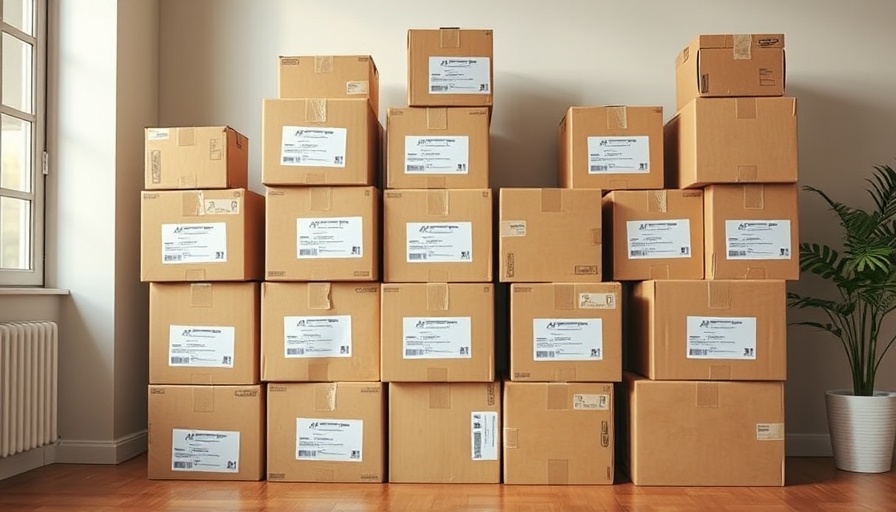
The Art of Packing: Transforming Chaos into Order
Moving is a multifaceted experience that can be both exciting and overwhelming, especially for families. As you transition into a new environment, mastering the packing process can alleviate some of the associated stress. Drawing insights from a blend of personal experiences and expert advice, this guide will equip you with essential tips for efficient packing, suitable for families on the move.
Why Packing Yourself Can Be Beneficial
In an era where convenience often comes at a price, many families find themselves weighing the option of professional packing services against doing it themselves. As mentioned in a recent article on moving tips, packing your own items not only grants you greater control over your belongings but also the opportunity to declutter. The author, showcasing their own experiences, explains how packing enabled them to donate items they no longer needed, thereby reducing clutter and allowing for a fresh start in their new home. By using this chance to sift through possessions, families can save significantly on moving costs while ensuring only cherished items make the journey.
The Must-Have Packing Supplies for an Effortless Move
Preparing for moving day starts long before the truck arrives. Utilizing quality packing supplies can make all the difference. Standardizing your box sizes, as suggested in this handy guide, ensures easy stacking and organization. In addition to sturdy cardboard boxes, consider investing in plastic storage bags for soft items like clothes and linens. These bags maximize space and double as padding during transport, safeguarding your fragile items.
Decluttering: A Gift to Yourself
Adopting a minimalist mindset before moving is crucial. The 'Marie Kondo' philosophy — keeping only items that spark joy — is an effective strategy when sorting through your belongings. This isn't just about reducing clutter; it’s been shown that less clutter contributes to lower stress levels and creates a more harmonious living environment. Prioritize decluttering as an activity that not only prepares you for your upcoming move but also provides a therapeutic reset during a time of transition.
Planning an Efficient Moving Day
Logistics are key to a seamless moving experience. Before moving day arrives, creating a detailed plan can streamline the process. Communicate with your moving crew about any special handling instructions and keep track of essential items separately. Recommendations highlight treating this day like a big event — perhaps planning fun activities for children or arranging for them to stay with family can minimize disruption and chaos. Moreover, an organized final walkthrough of your old home ensures nothing is left behind, providing peace of mind as you embark on your new adventure.
Settling into Your New Home: Making It Comfortable
Once the boxes are unpacked, it’s time to personalize your new space. As experts advise, starting with the kid's rooms can help them feel settled and secure in their new environment. Involving children in the unpacking process, allowing them to decorate their own spaces, can also foster a sense of ownership and responsibility. Beyond unpacking, exploring local areas and landmarks together as a family can instill excitement and help everyone feel at home in their new surroundings.
Conclusion: Embracing the Moving Journey
Moving is undoubtedly a monumental life event that requires thoughtful preparation. By applying these practical tips — from effective packing strategies to nurturing family bonds during the transition — you can transform the moving process from a daunting task into an opportunity for growth and organization. As you embark on this new journey, remember that every packed box brings you one step closer to making new memories in your fresh space.
So gather your packing supplies, call your loved ones for help, and let the excitement of your new home wash over you!
 Add Row
Add Row  Add
Add 




Write A Comment